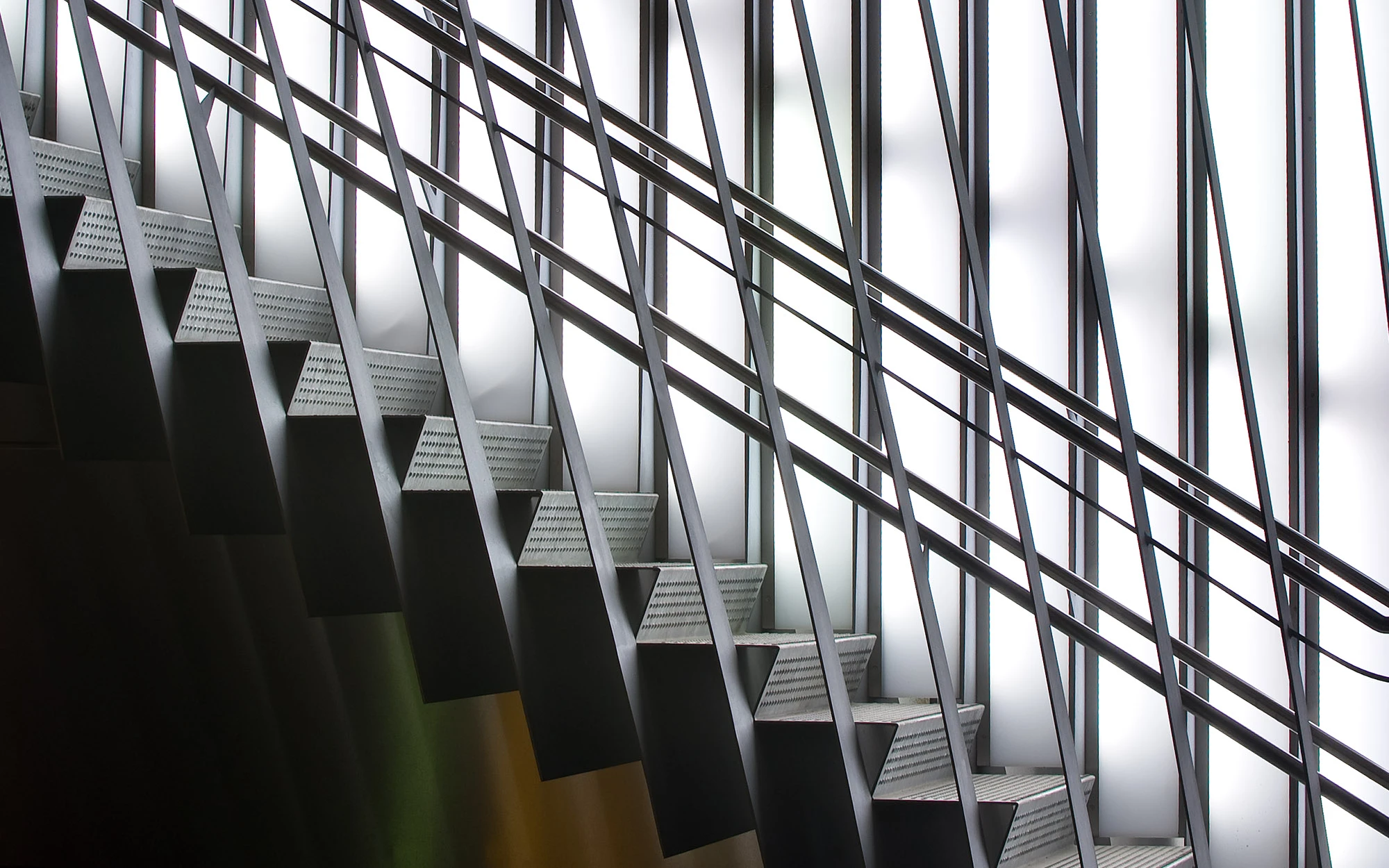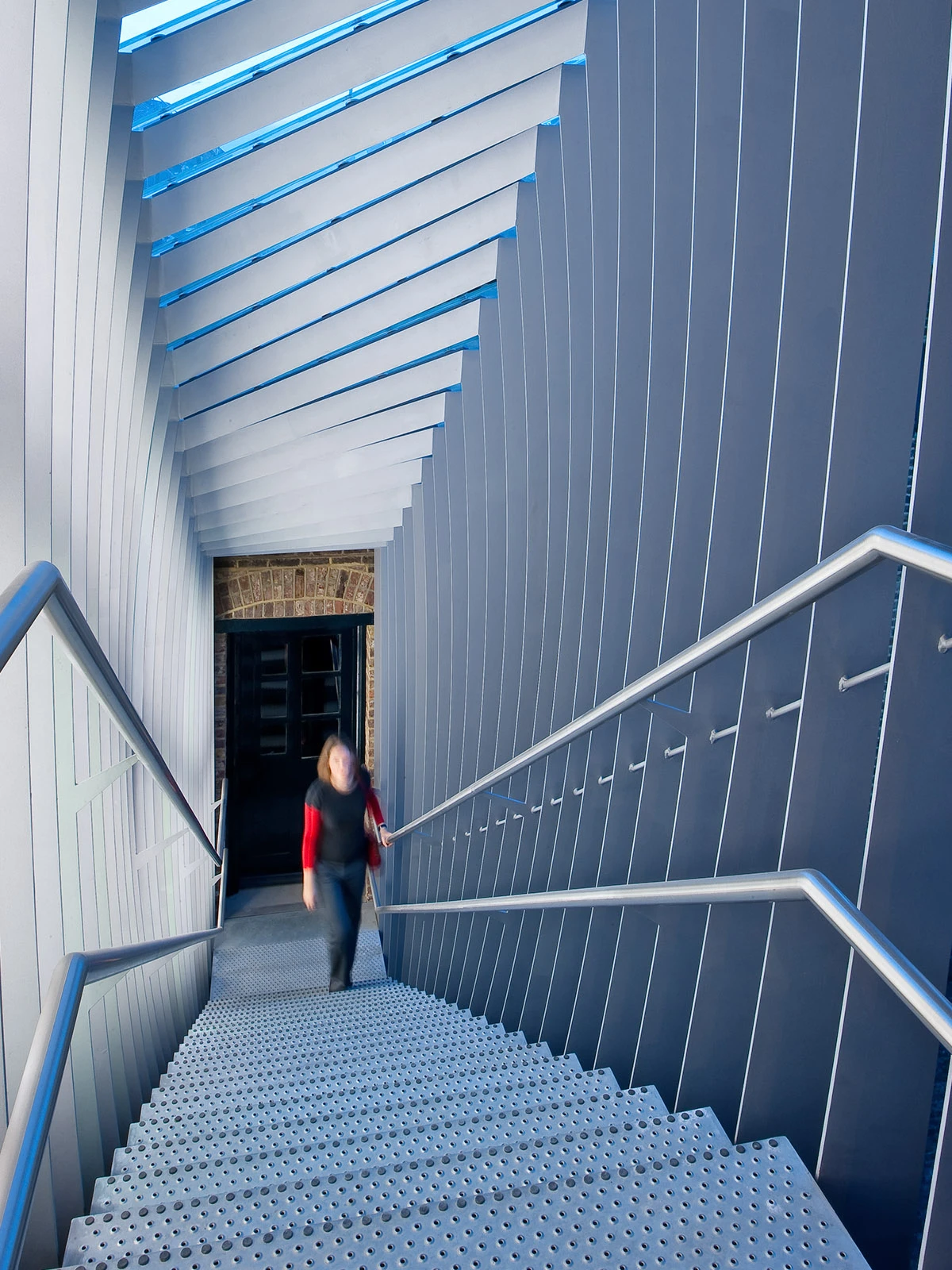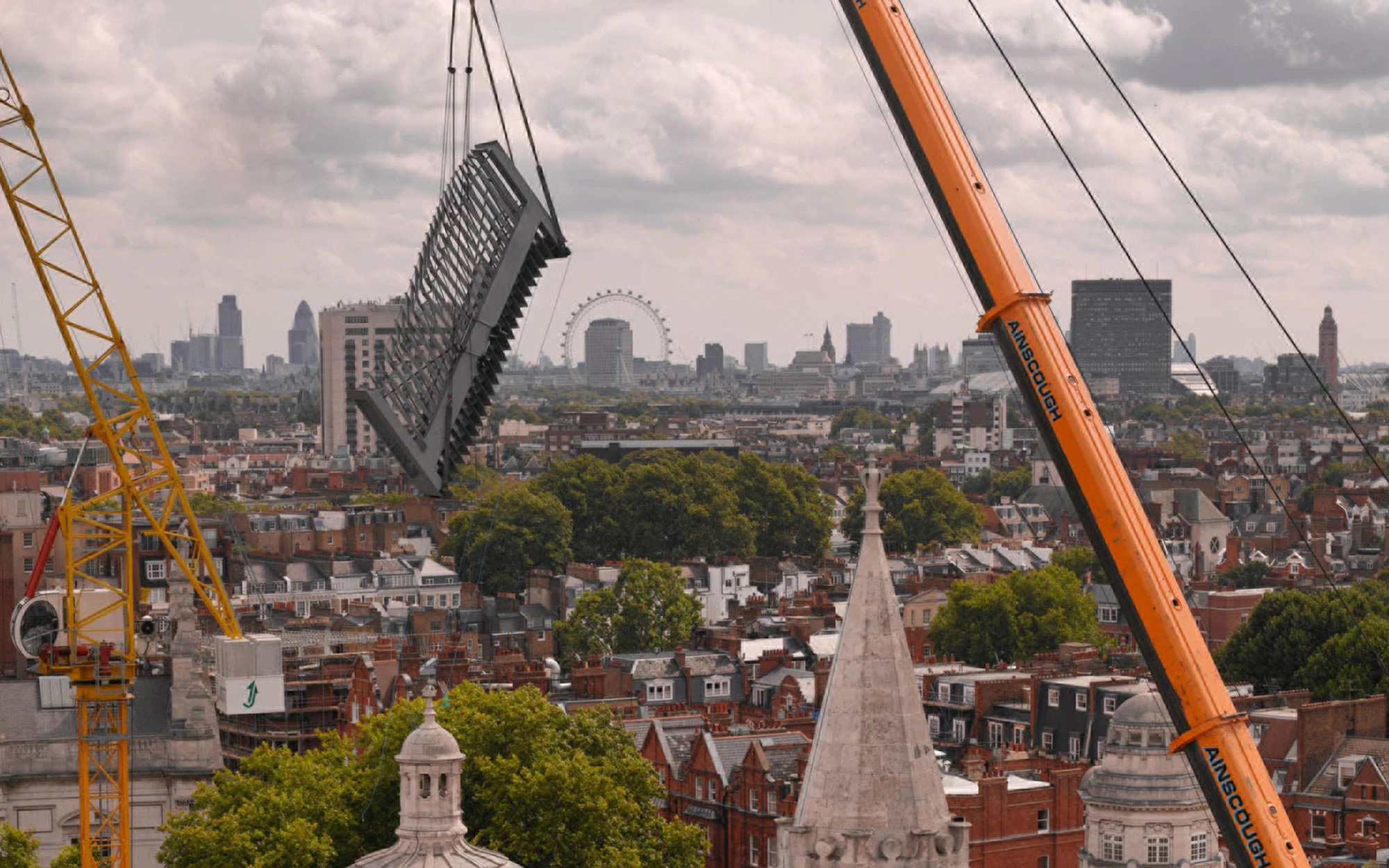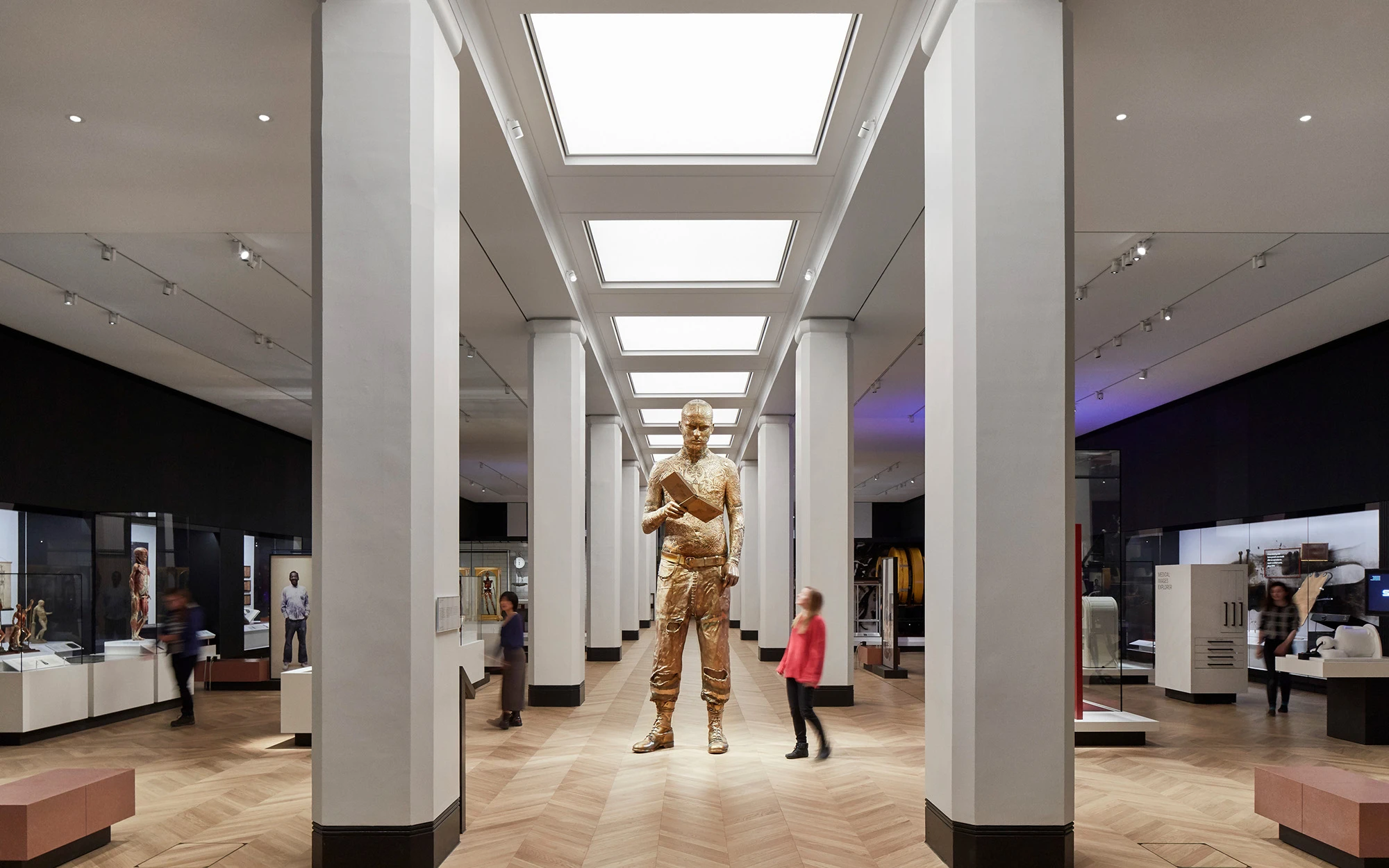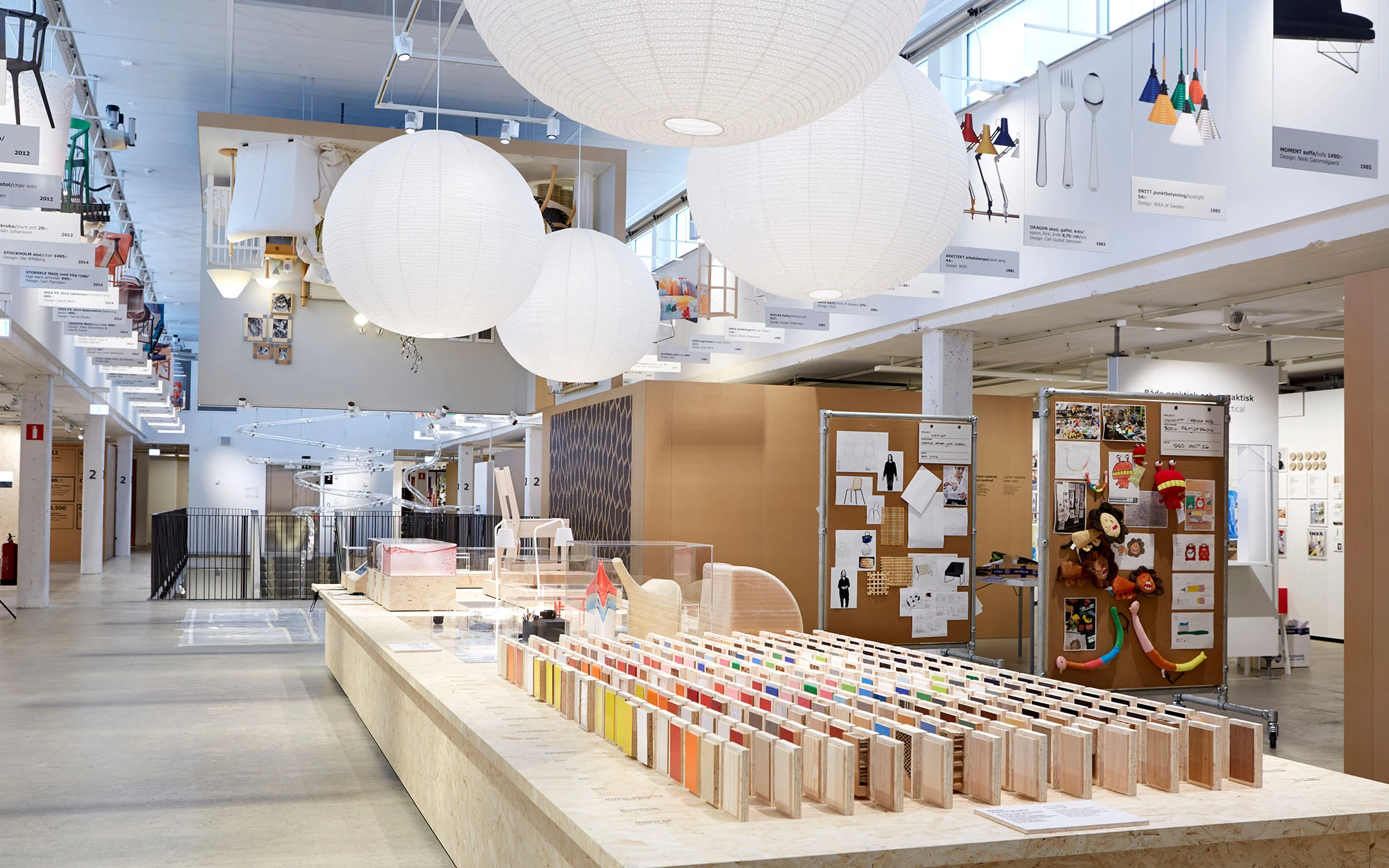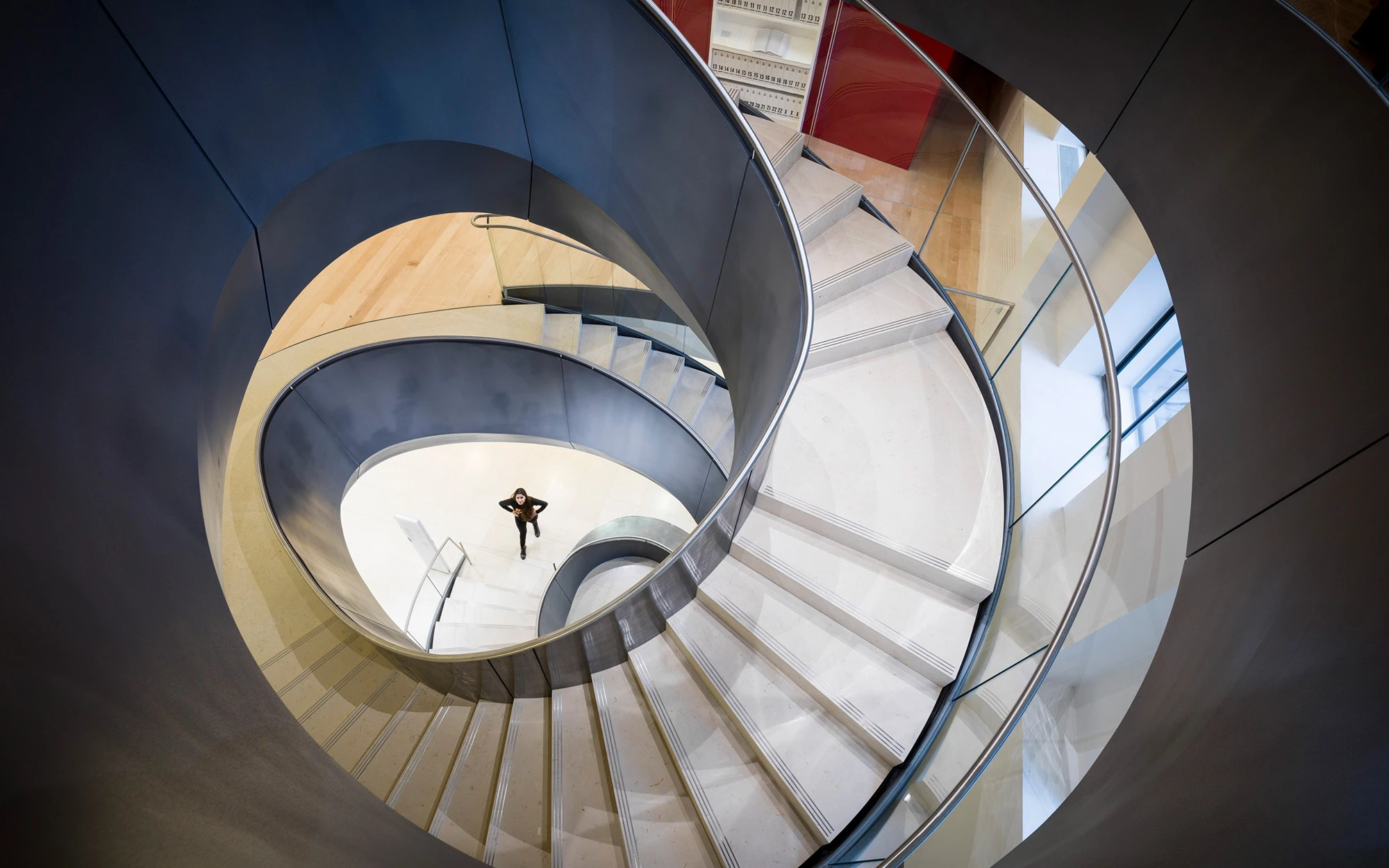The 4.5 million objects at London's Victoria and Albert Museum make it the world's greatest collection of decorative arts and design. The refurbishment of the ceramics galleries was central to the first phase of the museum's Future Plan, which restores and reconfigures the vast museum over a 20-year period. Part of this redevelopment included a new fire escape stair, the introduction of the galleries had lengthened the existing escape path and created an unacceptable dead end. This functional requirement was beautifully resolved by WilkinsonEyre with a dramatic and elegantly detailed structural form.
The bridge is just seven metres long, infrequently used and barely visible to the general public - it is something of a hidden jewel. The starting point for the design was that the bridge should be a functional object, prefabricated to allow it to be craned into position with minimal disruption, but in reality, it is a far more dynamic sculptural intervention. The form appears to cascade, unsupported, from one building to the other like a shuffle of cards, linking the two springing points with a frozen ripple of glass and steel. The form is expressed by a series of vertical portals, aligned with each stair tread.
To create the sense of movement these gradually slip back to an angle of 15 degrees in the centre of the bridge and then recover back to a vertical alignment at the lower end. An additional incremental curve on the inner edge of the portal frames appears to create a dishing effect across the length of the bridge interior. To enhance the feeling that the bridge is jumping between the two buildings, the structure – a torsion box beam – spans between the two buildings, the bridge frames cantilevering out from this.
